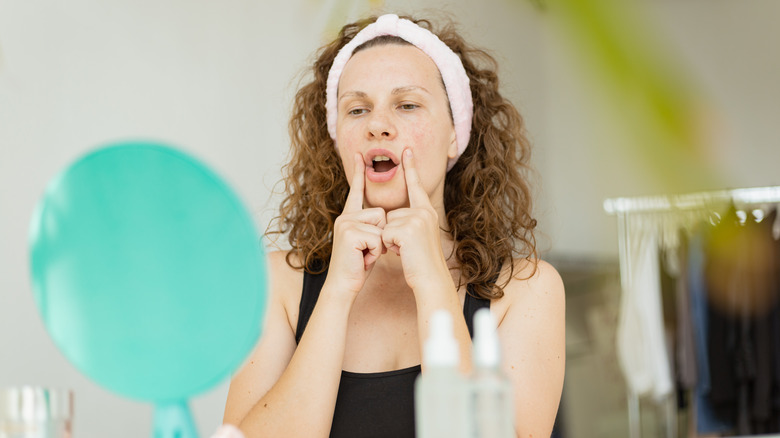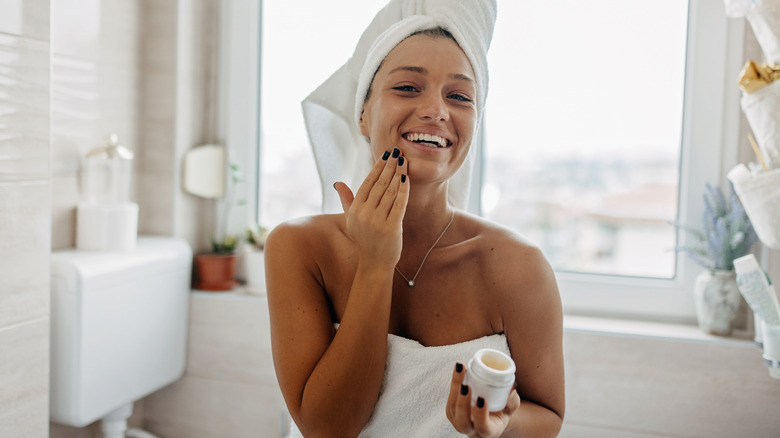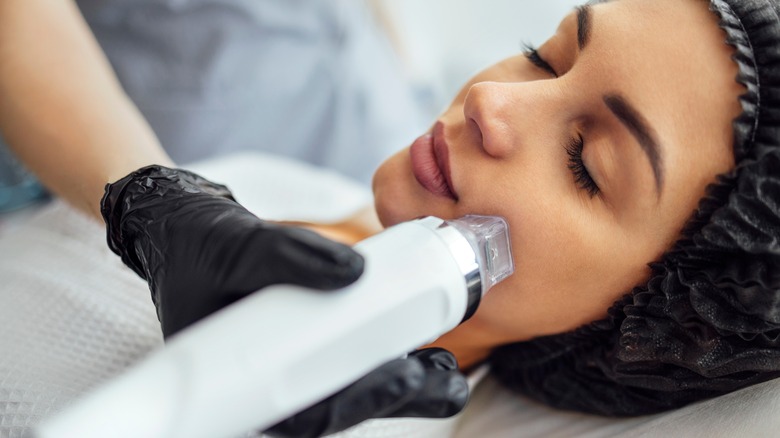Our Best Tips For How To Reduce Smile Lines
Smile lines, commonly known as laugh lines or nasolabial folds, refer to the deep creasing of the skin around the mouth. Typically, these lines appear on both sides of the mouth when you smile, beginning from the outer edge of the nostrils, and ending below your bottom lips. For cosmetic reasons, smile lines are often seen in a negative light, especially if they stand out even when you're not smiling. However, if you notice folds around your mouth, you should understand they are both natural and, in most cases, inevitable.
While there are many causes for laugh lines, the most obvious is age. As we grow older, our skin produces less collagen, which causes it to lose its plumpness. When our skin produces less collagen, this also leads to wrinkles, including those around the mouth.
Aside from the natural aging process, genetics also come into play and can increase the chances of developing smile lines. For instance, some people notice lines around their mouth from a young age. That said, there are ways to delay laugh lines forming and reduce their appearance once they have become prominent, from at-home preventative treatments to injectable dermal fillers.
Facial exercises
In many cases, smile lines form when your facial muscles make repetitive movements. This includes common facial expressions such as smiling and laughing, which contract the muscles and lead to creases in the skin over time. One treatment method for laugh lines is to address them as you would with other muscle problems in your body: exercise. Practicing specific facial exercises or face yoga poses designed to strengthen the muscles around your mouth may reduce the appearance of smile lines, per MedicalNewsToday.
For instance, facial exercises that work muscles such as the orbicularis oris muscles can help prevent and reduce smile lines. To train this muscle, use your index fingers to "hook the corners of the mouth" and pull outward approximately a quarter inch. While creating resistance with your fingers, try to bring the corners of your mouth back together using your mouth muscles and hold for five to 10 seconds. Relax your muscles and then repeat upward of 25 times. The more often you practice this exercise, the faster you may notice improvements.
Implement an exfoliation routine
Retinol, a form of vitamin A, is a go-to ingredient for all kinds of fine lines and wrinkles. This is because it encourages collagen production, a component of your skin that decreases as you grow older. Smile lines fall into the same category and respond well to products containing retinol. According to a 2023 study published in the Journal of Cosmetic Dermatology, applying a topical product containing retinol, tripeptide, and glaucine "significantly improved" the appearance of lines and wrinkles on test subjects after 12 or 16 weeks of usage.
Another popular ingredient for treating skin wrinkles is tretinoin, which is also a retinoid derived from vitamin A but is stronger than retinol. "Regular and consistent use of topical tretinoin can help improve the quality of collagen in the skin, leading to a smoother appearance," board-certified dermatologist and celebrity beauty expert Anna Guanche, M.D., tells Byrdie. A simple and gentle face massage with a non-comedogenic face oil will also help if performed regularly. However, it's easier to prevent smile lines with a regular skincare routine than to treat them once they have already formed. Therefore, it helps to implement a consistent routine as soon as you notice signs.
Hydration is key
Moisturizing your skin regularly with a high-quality product that is customized to your specific skin concerns can help reduce the appearance of smile lines, as dehydration can exacerbate lines and wrinkles. "When you apply moisturizer, it traps the water in your skin, keeping skin hydrated and plumped. This can make your wrinkles less visible, but it won't prevent them from forming in the first place," Penn Plastic Surgery physician Dr. Ivona Percec tells Penn Medicine.
In other words, a pricey moisturizer does not have the power to prevent lines from forming entirely, as skincare products can only do so much, but they do help make smile lines less noticeable.
What's more, overindulging in certain lifestyle habits may lead to dehydrated skin and may derail your progress. For example, the frequent consumption of alcohol and caffeine can cause dehydration and even decrease your skin's natural elasticity. If you're an occasional drinker, this is likely not an issue, but it's a good idea to cut back on caffeine and alcoholic beverages if you suspect they may be drying out your skin.
Make lifestyle changes
High alcohol intake isn't the only lifestyle habit that negatively affects your skin. A poor diet and smoking also contribute to the appearance of fine lines and wrinkles. A healthy diet of nutrient-dense whole foods facilitates collagen production, which keeps your skin plump and youthful. On the other hand, a diet rich in sugar, processed foods, and refined carbs can cause inflammation and damages your body's collagen.
Additionally, smoking is considered one of the top causes of smile lines. Not only does it dehydrate the skin and lead to premature aging, but the physical act of inhaling smoke causes deep creasing around the mouth due to repetitive pursing of the lips.
Another healthy skincare habit to follow is to use regular sun protection. "Daily sunscreen can help preserve your natural collagen and help prevent worsening lines," dermatologist Cindy Yoon-Soon Bae tells Harper's Bazaar. You can also double up on your skin protection by applying a vitamin C serum, as it helps fight wrinkles and provides antioxidant support to prevent premature aging.
In-office treatments
If you don't observe any improvements with at-home remedies or require more intensive treatment for deep lines, there are several in-office treatment methods to choose from. For instance, injectable dermal fillers containing hyaluronic acid are a common treatment option for nasolabial folds as they are non-invasive and cause minimal scarring.
Another option is radiofrequency microneedling, which is a procedure that uses radiofrequency waves to stimulate collagen production. This type of microneedling requires zero downtime, but you'll likely need multiple treatments before you notice results.
Your dermatologist may also recommend trying Frazel laser treatments. "The Fraxel 1550 is another procedure that can help reduce smile lines because of the microscopic laser columns that penetrate deep into the skin and help the body remodel its own collagen," Anna Gaunche tells Byrdie. "When there is a micro-injury to the skin, it forces the body to generate more collagen to repair the injury, creating a more youthful appearance."
Regardless of your decision, remember that in healthy individuals smile lines appear as a natural consequence of genetics and the aging process. They are not necessarily a sign of poor health, so don't feel pressured to treat them.





